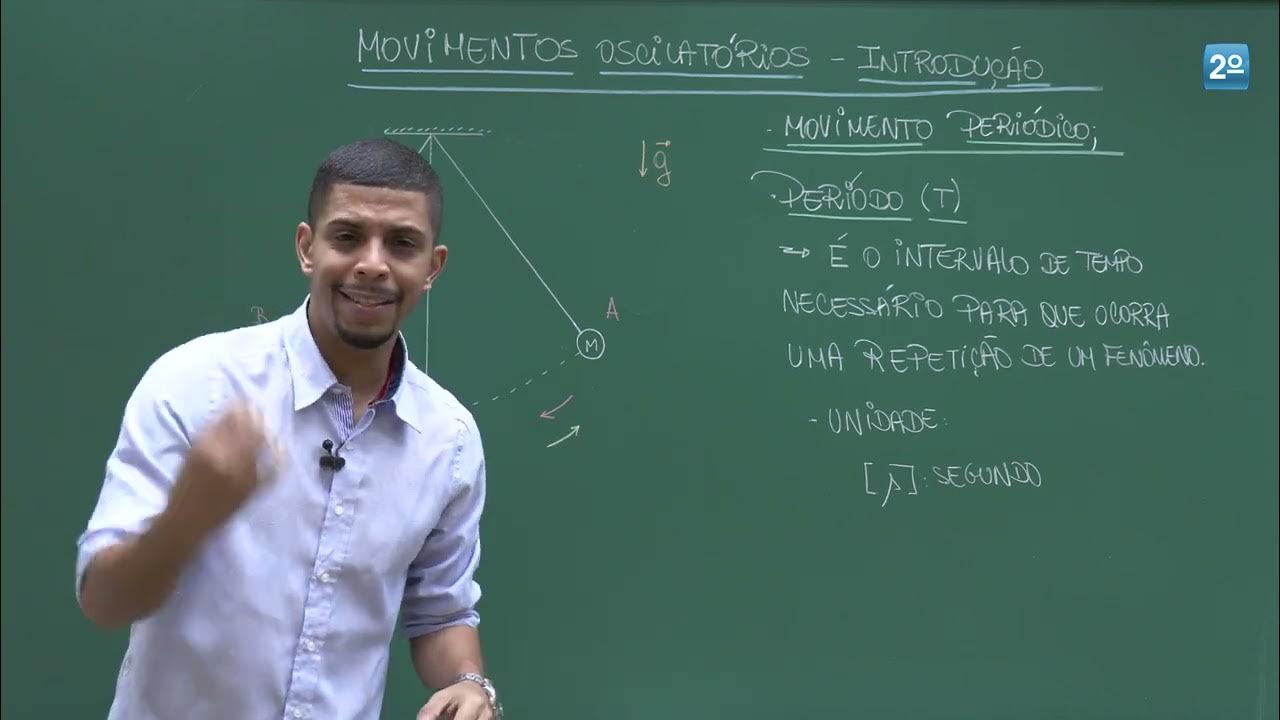Simple Harmonic Motion: Hooke's Law
Summary
TLDRIn this video, Professor Dave introduces simple harmonic motion, illustrating its periodic nature through examples like a mass attached to a spring and a pendulum. He explains key concepts, including elastic potential energy, kinetic energy, and Hooke's law, emphasizing the oscillatory behavior of a spring. The block's motion is sinusoidal, with maximum potential energy at extreme positions and maximum kinetic energy at the equilibrium point. The lecture also highlights the impact of friction on motion, leading to eventual damping. The understanding of these principles is essential for studying oscillatory systems in physics.
Takeaways
- 😀 Simple harmonic motion (SHM) is periodic motion, exemplified by systems like pendulums and vibrating springs.
- 🌀 A mass-spring system demonstrates SHM when a block attached to a spring is pulled and released, oscillating between compressed and stretched states.
- ⚡ Kinetic energy is at its maximum when the block is at the equilibrium position (x=0), while elastic potential energy peaks at maximum compression or extension.
- 📈 The position of the block over time follows a sinusoidal pattern, resembling a sine function.
- 🛑 Real-world systems experience damping due to friction, which causes the oscillation to eventually stop.
- 🔧 The spring constant (k) indicates the stiffness of a spring, unique to each spring type.
- 📏 Hooke's Law states that the force exerted by a spring is proportional to its displacement: F = -kx.
- ↔️ The negative sign in Hooke's Law indicates that the spring force acts in the opposite direction of displacement, functioning as a restoring force.
- 💡 The formula for elastic potential energy in a spring is PE = 1/2 kx², where x is the displacement from the equilibrium position.
- 🕰️ A pendulum also shows periodic motion but relies on gravitational potential energy instead of elastic potential energy.
Q & A
What is simple harmonic motion?
-Simple harmonic motion is a type of periodic motion where an object oscillates back and forth around an equilibrium position, such as the vibration of a spring or the swinging of a pendulum.
How does a spring behave when a mass is attached and pulled?
-When a mass is attached to a spring and pulled, it stretches the spring. Upon release, the mass vibrates between compressed and less compressed states, demonstrating oscillatory motion.
What happens to kinetic and potential energy in a mass-spring system?
-In a mass-spring system, kinetic energy is maximized when the mass is in the middle of its motion, while elastic potential energy reaches its maximum when the spring is most or least compressed.
What is Hooke's law?
-Hooke's law states that the force exerted by a spring is equal to the negative product of the spring constant (k) and the displacement (x) from its equilibrium position, represented as F = -kx.
What is the significance of the spring constant (k)?
-The spring constant (k) indicates the stiffness of a spring; a higher k value means a stiffer spring that requires more force to stretch or compress.
What is the formula for elastic potential energy in a spring?
-The formula for elastic potential energy in a spring is U = (1/2) kx², where k is the spring constant and x is the displacement from the equilibrium position.
How does friction affect the motion of a spring?
-Frictional forces will dampen the motion of a spring, causing it to gradually lose energy and eventually come to a stop, deviating from the ideal model of simple harmonic motion.
What type of potential energy is involved in pendulum motion?
-Pendulum motion involves gravitational potential energy, as the pendulum swings back and forth under the influence of gravity.
Why is the motion of a block on a spring considered periodic?
-The motion of a block on a spring is considered periodic because it oscillates back and forth between the same two positions repeatedly over time.
What would the graph of a block's position versus time look like in simple harmonic motion?
-The graph of a block's position versus time in simple harmonic motion would display a sinusoidal pattern, similar to a trigonometric sine function, indicating periodic motion.
Outlines

此内容仅限付费用户访问。 请升级后访问。
立即升级Mindmap

此内容仅限付费用户访问。 请升级后访问。
立即升级Keywords

此内容仅限付费用户访问。 请升级后访问。
立即升级Highlights

此内容仅限付费用户访问。 请升级后访问。
立即升级Transcripts

此内容仅限付费用户访问。 请升级后访问。
立即升级浏览更多相关视频

Aula 1 – Movimentos Periódicos e Introdução ao MHS

Comparing Simple Harmonic Motion(SHM) to Circular Motion - Demonstration

Drgania, ruch drgający #1 [ Ruch drgający i fale ]

Simple Harmonic Motion Introduction(SHM) via a Horizontal Mass-Spring System

M H S aula 03

Demonstrating What Changes the Period of Simple Harmonic Motion(SHM)
5.0 / 5 (0 votes)
